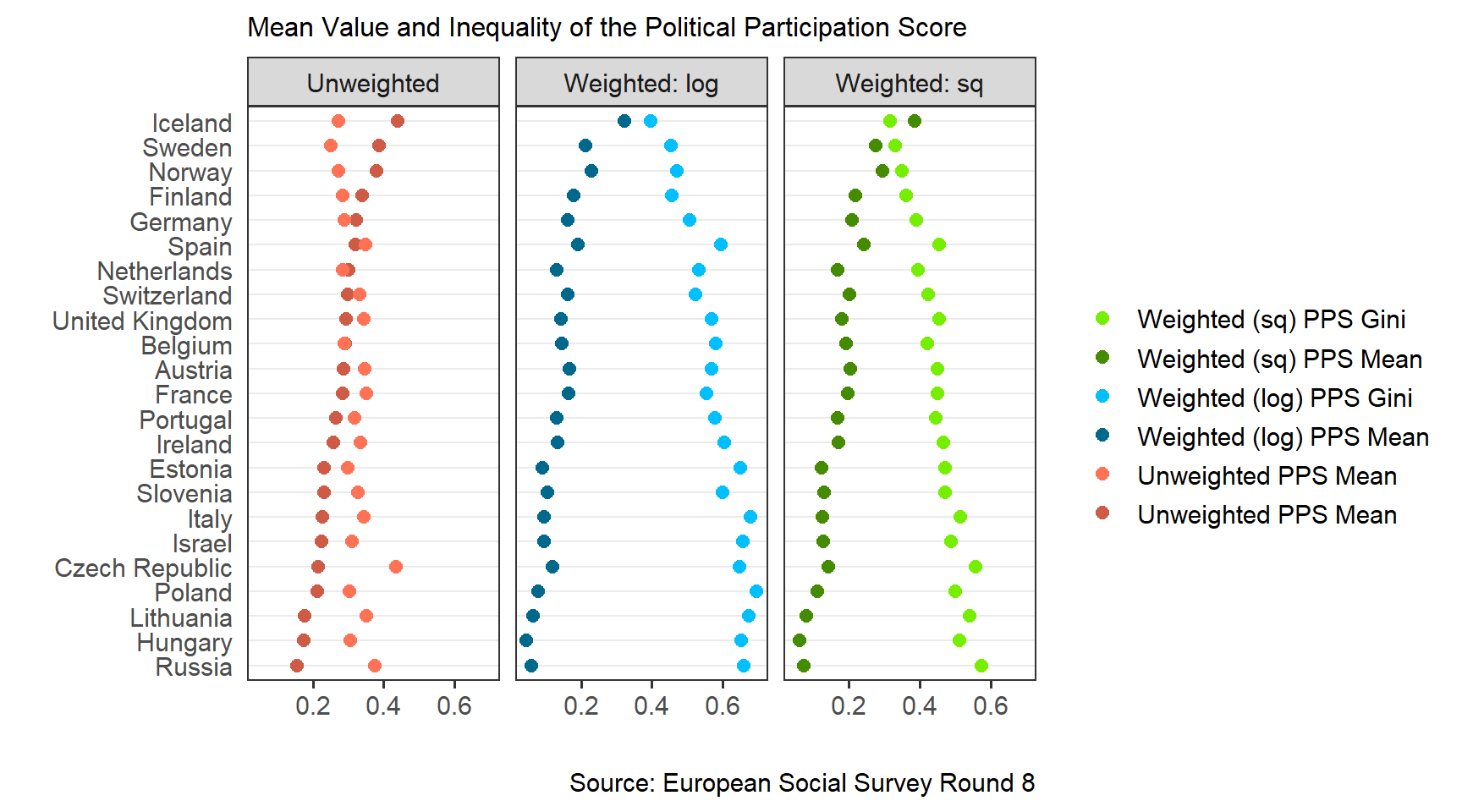

posted or shared anything about politics online, for example on blogs, via email or on social media.taken part in a lawful public demonstration,.worn or displayed a campaign badge/sticker,.worked in another organisation or association,.worked in a political party or action group,.voted in most recent general elections (1 if voted 0 if did not vote case excluded if ineligible to vote),.following the news (1 if more than 30 minutes on a typical day 0 otherwise),.I use all of them, dichotomizing when necessary: The European Social Survey asks about ten such activities (see the ESS/8 questionnaire). I apply a broad definition of political participation to include all activities that are related to politics.
#Vdem codebook code
The code for manipulating the data and plotting can be found here. I then check how this measure of inequality of political participation covaries with the V-Dem Political Equality indicator, economic inequality (from SWIID), and the Worldwide Governance Indicators. I use data from the European Social Survey, round 8 via the essurvey package. In this post I try to construct a measure of the inequality of political participation, which can be considered a part of political inequality, derived directly from individual-level survey reported participation in political activities. The level of political equality is scored on an ordinal scale for each indicator by experts and then converted to an interval variable based on a measurement model.
#Vdem codebook how to
How to measure political inequality? The Variaties of Democracy project (V-Dem) has a set of political equality indicators that capture the extent to which political power is distributed according to wealth and income, membership in a particular social group, gender or sexual orientation (cf.

It contains version 5.0 of the MID data, version 5.0 of the COW National Capabilities Data, Polity V 2018 data, version 10.0 of VDEM, the 2016 list of COW major powers, and version 4.0 of the COW Interstate War Data (links to webpages with codebooks for the respective datasets). This package can be used, for example, to study the dyadic "Democratic Peace". Package 2: Basic Dyad-Level Interstate Violence Data Package (1.0) Here is a sample of what a Country-Year observation looks like from one of the included datasets. This package can be used, for example, to study the monadic "Democratic Peace". Package 1: Basic Country-Level Interstate Violence Data Package (1.0) Then you and your students are ready to start creating datasets! Watch this video for an example of using NewGene to create a basic triadic dataset Step 3: Follow this video or read these instructions to load the Data Package into NewGene.
#Vdem codebook download
Step 2: Download one of the available packages (see below). Step 1: Download NewGene Here (for Windows) and Here (for Mac) It can also introduce students to the types of research questions scholars must ask and answer when crafting a dataset: what is my unit of analysis? Which variables are relevant for my theory? How are the variables constructed? NewGene can help students become familiar with the types of large-N data used to study international politics, especially international security.


 0 kommentar(er)
0 kommentar(er)
